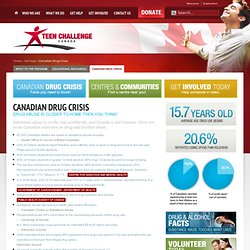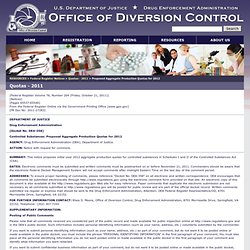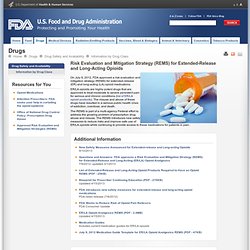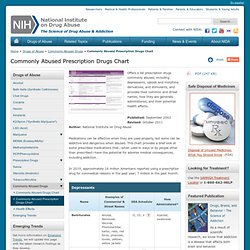

Prescription Addiction Radio w Larry Golbom - WTAN-AM 1340 / Tan Talk Radio Network. Ada Giudice-Tompson on Ontario's Prescription Opioid Crisis. DrugCite. MedWatch Online Reporting Form 3500. Canadian Foundation for Drug Policy. Canadian Drug Crisis - Teen Challenge Canada. Drug Abuse Is Closer to Home Then you Think!

Substance abuse is on the rise worldwide, and Canada is not immune. Here are some Canadian statistics on drug and alcohol abuse: 47,000 Canadian deaths are linked to substance abuse annually. — Health Officer's Council of British Columbia 23% of Ontario students report that they were offered, sold, or given a drug at school in the last year. That's about 219,000 students. 42% of Ontario students surveyed have used an illicit substance in the last year. 83% of Ontario students in grade 12 drink alcohol. 49% of gr. 12 students admit to binge drinking.
The top four substances used by Ontario students: 58% alcohol; Cannabis (marijuana) 25%; Non-prescribed use of prescription pain relievers such as codeine, Percocet, Percodan, Demerol, or Tylenol #3, 17%; Tobacco 11.7%. Sign this petition to ban Oxycontin. Vital Signs - Prescription Painkiller Overdoses in the US. Deaths from prescription painkillers* have reached epidemic levels in the past decade.

The number of overdose deaths is now greater than those of deaths from heroin and cocaine combined. A big part of the problem is nonmedical use of prescription painkillers—using drugs without a prescription, or using drugs just for the "high" they cause. In 2010, about 12 million Americans (age 12 or older) reported nonmedical use of prescription painkillers in the past year. Enough prescription painkillers were prescribed in 2010 to medicate every American adult around-the-clock for a month. Although most of these pills were prescribed for a medical purpose, many ended up in the hands of people who misused or abused them. Improving the way prescription painkillers are prescribed can reduce the number of people who misuse, abuse or overdose from these powerful drugs, while making sure patients have access to safe, effective treatment.
Quotas - 2011 - Controlled Substances: Proposed Aggregate Production Quotas for 2012. [Federal Register Volume 76, Number 204 (Friday, October 21, 2011)] [Notices] [Pages 65537-65540] From the Federal Register Online via the Government Printing Office [www.gpo.gov] [FR Doc No: 2011-27283] Drug Enforcement Administration [Docket No.

DEA-358] Controlled Substances: Proposed Aggregate Production Quotas for 2012 AGENCY: Drug Enforcement Administration (DEA), Department of Justice. ACTION: Notice with request for comment. Drugs@FDA. Www.samhsa.gov/data/DAWN.aspx. Postmarket Drug Safety Information for Patients and Providers > OxyContin - Questions and Answers. The U.S.

Food and Drug Administration has approved a new formulation of the controlled-release drug OxyContin. This new formulation is designed to decrease the likelihood that this medication will be misused or abused, and result in overdose.The new formulation adds in new tamper-resistant features aimed at preserving the controlled release of the active ingredient, oxycodone. The following question and answers provide some additional background information on OxyContin, the misuse and abuse of this drug, and the significance of this new technology. What is OxyContin? How is OxyContin used to treat pain? Information by Drug Class > Opioid Drugs and Risk Evaluation and Mitigation Strategies (REMS) On July 9, 2012, FDA approved a risk evaluation and mitigation strategy (REMS) for extended-release (ER) and long-acting (LA) opioid medications.

ER/LA opioids are highly potent drugs that are approved to treat moderate to severe persistent pain for serious and chronic conditions (list of ER/LA opioid products). The misuse and abuse of these drugs have resulted in a serious public health crisis of addiction, overdose, and death. The REMS is part of a multi-agency Federal effort to address the growing problem of prescription drug abuse and misuse. The REMS introduces new safety measures to reduce risks and improve safe use of ER/LA opioids while continuing to provide access to these medications for patients in pain.
Drugs. The great direct-to-consumer prescription drug advertising con: how patients and doctors alike are easily influenced to demand dangerous drugs. A neuroscientist examines his former life on drugs. Big Pharma Wins - Canadian Public Loses Again. Trends in opioid use and dosing among socio-economically disadvantaged patients.
Big Pharma « Canadian Health Coalition. The Issue: Canadian governments, employers, unions, and patients currently spend more money on prescription drugs (about $21 billion in 2007) than is spent on all services provided by doctors in Canada.

There were over 420 Million drug prescriptions filled in Canadian pharmacies in 2007, an amount equal to 12.6 prescriptions per capita. And a lot of this spending is on expensive (and often dangerous) new drugs which offer no better theraputic effect than their traditional (and cheaper) counterparts. Our homes are bombarded with TV Ads for these expensive new drugs (which is against Canadian law) further driving up drug spending. Canadians need a public, safe and appropriate drug plan they can depend on. Canadians need Pharmacare, a national publicly funded and administered insurance plan that would cover drug costs the same way Medicare covers hospital and doctor costs, providing universal access to safe and appropriate care.
ARPO - Advocates for the Reform of Prescription Opioids. Commonly Abused Prescription Drugs Chart. Medications can be effective when they are used properly, but some can be addictive and dangerous when abused.

This chart provides a brief look at some prescribed medications that—when used in ways or by people other than prescribed—have the potential for adverse medical consequences, including addiction. In 2010, approximately 16 million Americans reported using a prescription drug for nonmedical reasons in the past year; 7 million in the past month. Intoxication Effects - Sedation/drowsiness, reduced anxiety, feelings of well-being, lowered inhibitions, slurred speech, poor concentration, confusion, dizziness, impaired coordination and memory Potential Health Consequences - lowered blood pressure, slowed breathing, tolerance, withdrawal, addiction; increased risk of respiratory distress and death when combined with alcohol.